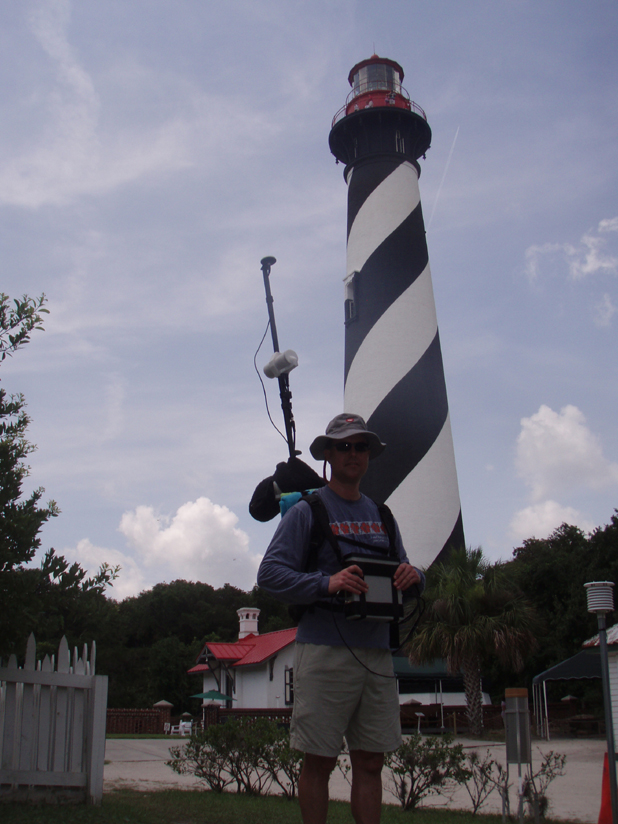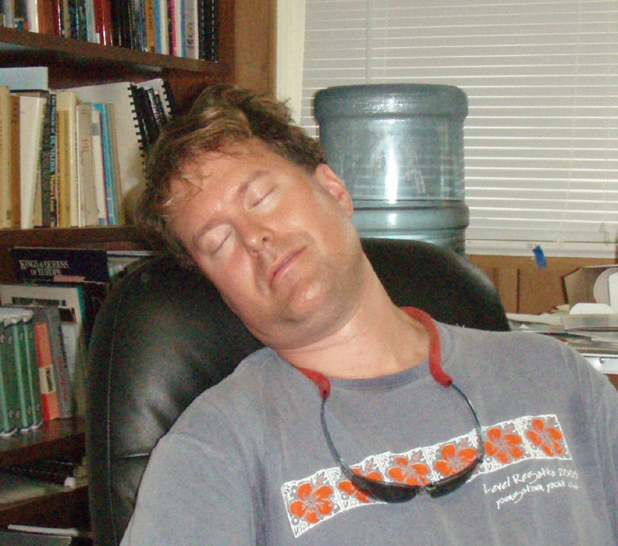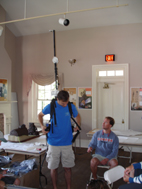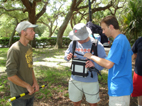“Ghostbusting?” asked a passer-by. No, archaeology of course! Here is Jody Bulman before and after a hot, sweaty and entertaining magnetometer training morning on the lawn in front of the LAMP lighthouse. We are all very contented students and not one of our new toys that we are getting to play with is worth under $10,000!
Jody gets his kit on!

And this is the after shock of a long morning’s work!

And the beauty of a gradient magnetometer is that it knows when the walker stops and adjusts for it. All we had to do is mark four perimeter points by a handheld GPS, and of course remove all jewelry, mobile phones and watches to prevent any dodgy readings. Unbelievably this machine is even comfortable to carry, with its purpose-built backpack. Only one minor modification: a rolled-up towel at the back of the head to prevent the Mag walkers from knocking themselves out on the contraption.
How high am I?
This was preceded by an excellent and informative lecture on gradient magnetometers, given by Doug Hrvoic of Marine Magnetics of Ontario. All but perhaps one pair of eyes glazed over, though, at the sight of a hefty logarithm. We archaeologists are easily frightened by the sight of mathematical formulas and today was no exception.

We will be using this walking magnetometer–actually a more sophisticated version with two sensor heads known as a gradiometer–to survey Anastasia Island State Park and Conch Island starting tomorrow. A very sincere thanks to GEM Systems–manufacturer of advanced magnetometers and magnetic sensors–for loaning this system to LAMP and the Flinders Field School for our ongoing archaeological research.

We did learn that it may be possible even to date an object such as a cannon simply by testing its magnetic field. Don’t try this at home though.

